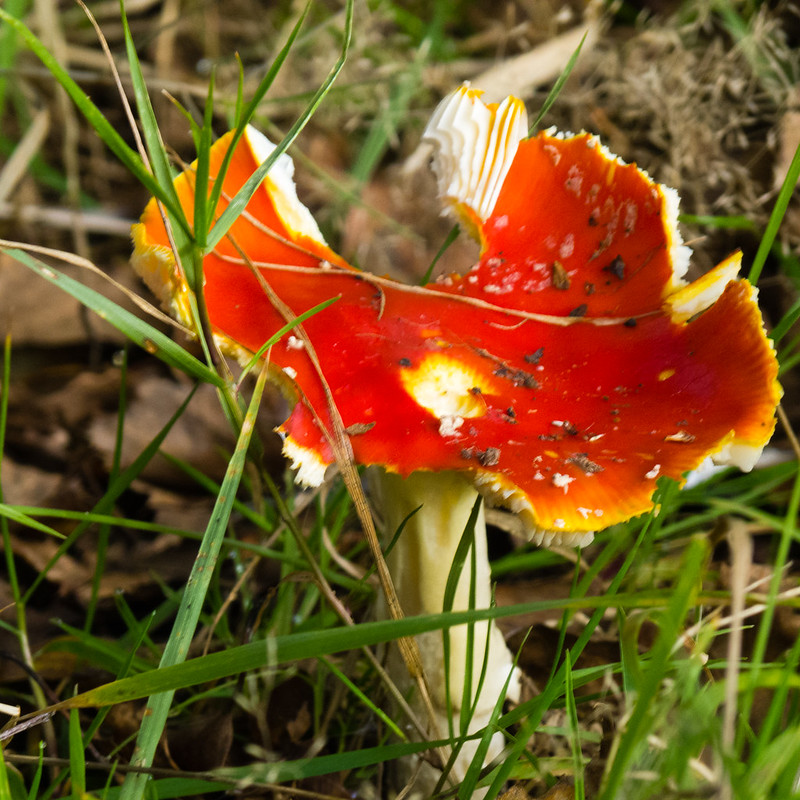Fairiesbonnets are tiny inkcap mushrooms which grow in clusters on wood. These were just above ground level on one of the trees along Tettenhall Road.
Amethyst Deceivers on a lawn
Amethyst deceivers are small mushrooms which grow in association with coniferous trees.
When they first emerge, they are brightly coloured with the hue of amethysts (lavenderish semi-precious stones). The deception which their name indicates includes their fading with age, adding to the difficulty in identifying them.
These had only just begun to fade, even though they had been around long enough for something to have eaten almost half the cap of the largest one.
Troop of glistening inkcaps
Glistening inkcaps are small mushrooms which grow in troops on underground rotting wood, such as the roots of former trees.
The centres of the caps of freshly emerged ones have a rich tan colour, fading towards grey at the rim of the cap. As the mushrooms age, the cap centres shift colour progressively to approach the tone of the rim.
A lasting patch may have clumps of mushrooms of different ages.
These were growing in a spot by a footpath where there are fresh eruptions of glsitening inkcaps several times a year.
Mushroom with a fibrous-looking cap
Towards the end of October, a belated fungi flush finally got underway. There were some common and familiar species, and other species which I don’t remember having seen before.
This is a species I failed to identify. As so often with this year’s pictures, it was taken on a morning after overnight rain.



















